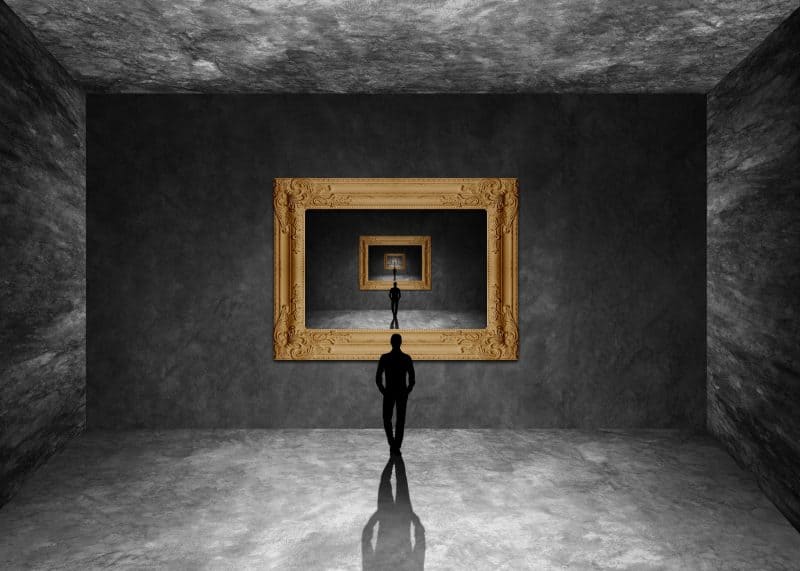Did you know that our minds – particularly our subconscious minds – are like computers? They are able to receive, process, record and store massive amounts of information. In fact, every experience in our lives is stored in our subconscious as memory. When we experience something, it’s distilled through an incredibly complex series of events, throughout multiple regions of the brain and eventually ends up triggering our ‘autonomic nervous system.
Our experiences either trigger the sympathetic part (activating a fight or flight response) or the parasympathetic part (signalling a rest and digest response). When these systems are triggered, they release powerful neurotransmitters and hormones that traverse throughout our bodies on a cellular level manifesting into a ‘response’ to the experience. These responses can include a change in breathing, heart rate, blood pressure or digestion, creating conditions for either growth (resting and digesting) or protection (fight or flight).

When we live through traumatic experiences, a natural defence for the mind is to suppress the ‘information’ from the experience. However, in time, this ‘information’ can resurface anytime a similar experience triggers us again. Our subconscious mind is trying to repurpose our memories in a homeostatic way – like a cut that turns into a scab that seals into a scar – our subconscious mind is trying to fix the unresolved ‘wounds’ in our life.
This is why when we feel emotional trauma, our experiences get “stored” or “stuck” not only in our subconscious minds and memory, but held in our physical bodies as well. Over time, these ‘stored’ physical responses can turn into heart disease, high blood pressure or irritable bowel syndrome. Similarly, based on our experiences that accumulate over time, our subconscious minds and memories can internalize conclusions and beliefs about ourselves (like not being worthy or loveable), that can ‘condition’ emotional responses in us to act certain ways. Over time, this conditioning can turn into anxiety, depression, self-harm and other mental health issues.
To understand how our subconscious mind works further, we have to understand how our memory works. Our memory has three components in which it breaks every experience down into… the facts (what actually happened), the feelings (how you felt during the experience), and the way we are conditioned by it (the learned response to the trauma). These three components of a memory continue to intermingle throughout life causing us a certain degree of confusion and emotional distress. This is where the subconscious mind comes in. The homeostatic response is to clear the emotional trauma from our memory, but our subconscious mind has no volition of its own, per se, until we consciously intervene.
Our imagination is one of the two channels of communication we have to consciously access our unconscious minds; the second channel is through dreaming or fantasizing. Fantasy comes from the Greek term meaning “to make visible”. The psychological function of fantasy is to make visible what is otherwise invisible; those parts of our unconscious mind that reveal the crevices of our psyche. Our current culture has an incredible collective prejudice against the imagination, fantasy or dreams. Reflected in the beliefs we repeat “you’re only imagining that”, or “it was just a dream or fantasy”. We have come to equate imagining, dreaming or fantasizing as not being real, however, if we learn to tune into these streams of symbolic imagery our subconscious minds create, we can better understand the parts within us that integrate to form our whole, authentic self.
You may be scratching your head thinking, well how do I do that? The short answer is get to know your archetypes. Archetypes play very important roles in our psyche. Simply put, they are clusters of behaviours that work together to help protect us from having to re-experience some past hurt that has not been resolved. You’ve heard of them before… the caregiver, the explorer, the rebel, the hero. For example, if you were a child of divorce, you may have felt that you had no control in your life. Now as an adult, that ‘child’ craves control and feels most comfortable in a leadership position (a ruler) where they can ensure and provide structure.
In this way, archetypes can keep us out of any new dangers, but they also keep us cycling through our ‘conditioned responses’. Because these responses are familiar – versus dealing with the unknown – we simply classify them as our norm and go on in the world unaware of the patterns. Often people will say “That’s just the way I am”, “I’ll never change”, or “it’s in my blood”. If left unchecked, these unexamined or unquestioned behaviours (archetypes) form superhighways of neural reactive responses that loop us into an auto piloted life. So, that adult who craved control as a child, now suffers from perfectionism and anxiety because they are stuck in that loop of needing constant control.

We have come to equate imagining, dreaming or fantasizing as not being real when in fact, these are the only ways of observing and understanding the parts of ourselves that make us act the way we do and inform who we truly are. Through mindfully aligning with our automatic thoughts, beliefs, sensations and behaviours, we can curiously and compassionately observe ourselves with intrigue instead of judgment. By understanding how our subconscious mind works, we can trigger its natural homeostatic healing response to the hurts we experienced, enabling us to live free and healthy lives as our ‘True Self’.
Author: Kristina Dragnea, Registered Psychotherapist, Practice Owner of Mindful Maelstrom Whole Health Collab
Latest posts by Canadian Home Trends (see all)
- Dining Room Design Tips - July 13, 2025
- Practical Luxury in Forest Grove - July 13, 2025
- The Hidden Value of Great Design - July 13, 2025






